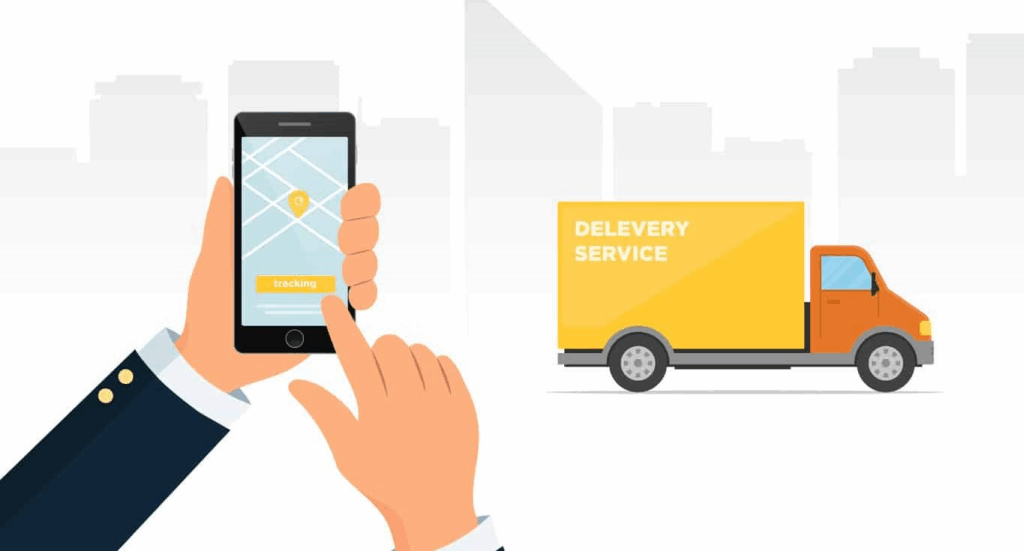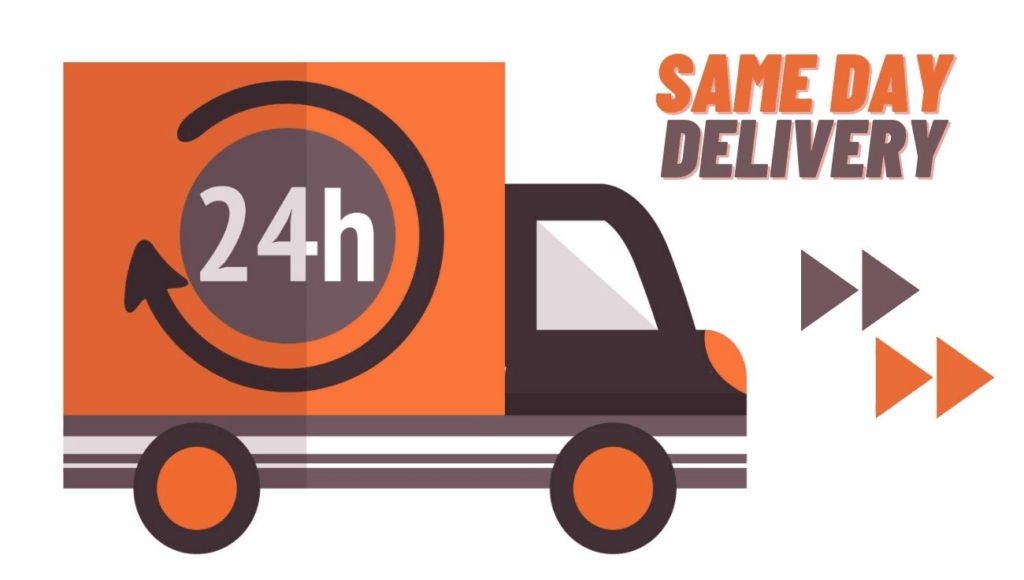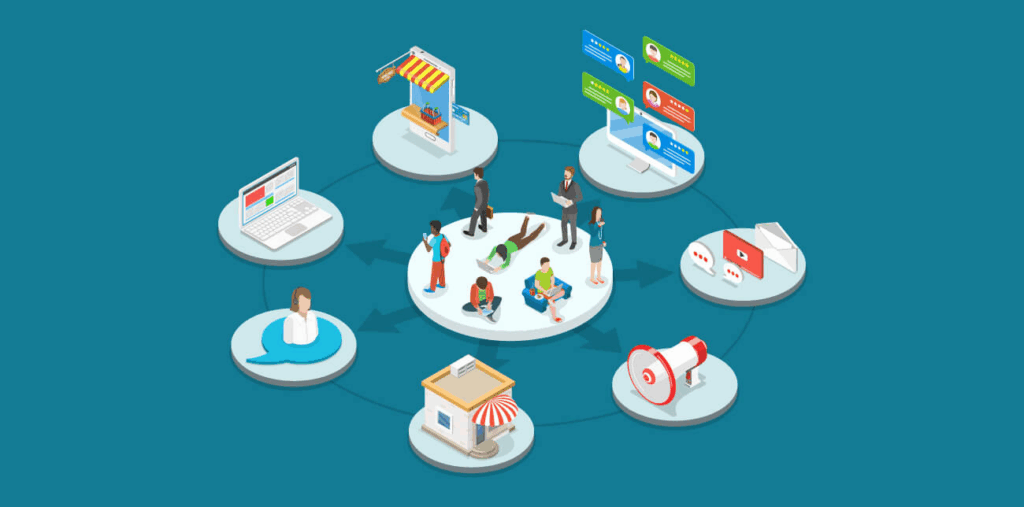E-Commerce-Versandintegration vs. manueller Versand: Wer gewinnt?
Der Versand ist das Rückgrat des elektronischen Handels. Ohne zuverlässige Lieferung können auch die besten Produkte und Websites die Erwartungen der Kunden nicht erfüllen. Die eigentliche Frage für Online-Händler ist, ob sie sich auf Integration von E-Commerce-Versand oder mit manuellen Versandverfahren fortfahren.
In diesem Artikel werden beide Ansätze untersucht und die Stärken, Schwächen und der ultimative Gewinner für wachsende Unternehmen herausgestellt.

Warum ist der Versand im elektronischen Handel so wichtig?
Was erwarten die Kunden heute?
Die Kunden wollen einen schnellen, erschwinglichen und transparenten Versand. Sie erwarten eine Sendungsverfolgung in Echtzeit, genaue Schätzungen der Lieferzeiten und mehrere Versandoptionen.
Wenn ein Geschäft dies nicht bieten kann, lassen die Kunden oft ihren Einkaufswagen stehen und entscheiden sich für einen Konkurrenten. Deshalb ist ein effizienter Versand von entscheidender Bedeutung.
Wie schadet ein schlechter Versand den Unternehmen?
- Umsatzverluste durch unklare oder hohe Versandkosten: Wenn Kunden an der Kasse unerwartete oder überhöhte Versandgebühren sehen, brechen viele ihren Einkaufswagen ab, was zu Umsatzeinbußen und niedrigeren Konversionsraten führt.
- Vermehrte "Wo ist meine Bestellung?"-Anfragen: Ohne Echtzeitverfolgung wenden sich die Kunden oft wiederholt an den Support, um sich nach ihren Lieferungen zu erkundigen, was zu einer zusätzlichen Arbeitsbelastung für das Team führt.
- Rufschädigung durch verspätete oder fehlende Lieferungen: Verspätete Sendungen oder verlorene Pakete das Vertrauen der Kunden beeinträchtigen, was zu negativen Bewertungen und weniger Wiederholungskäufen führt.
- Höhere Betriebskosten durch sich wiederholende manuelle Arbeiten: Die manuelle Eingabe von Versanddaten und die Behebung von Fehlern kostet Personalzeit, erhöht die Arbeitskosten und bremst das Wachstum des Unternehmens.
In diesem Zusammenhang wollen wir den manuellen Versand und die Integration des E-Commerce-Versands vergleichen.
Was ist manueller Versand?
Wie funktioniert der manuelle Versand?
Im manuellen Versand muss das Personal:
- Erfassen Sie die Bestelldaten auf der Website.
- Geben Sie Versandinformationen in Speditionsportale ein.
- Drucken Sie die Etiketten separat aus.
- Informieren Sie Ihre Kunden per E-Mail oder Telefon über die Sendungsverfolgung.

Dieses System funktioniert bei sehr kleinen Bestellmengen, wird aber schnell ineffizient.
Was sind die Herausforderungen beim manuellen Versand?
- Zeitaufwendig: Die Mitarbeiter verbringen Stunden mit dem Kopieren von Daten.
- Fehleranfällig: Tippfehler in den Adressen führen zu erfolglosen Zustellungen.
- Inkonsistent: Die Kunden erhalten die Aktualisierungen möglicherweise nicht rechtzeitig.
- Fragen der Skalierbarkeit: Unmöglich zu verwalten während Hochsaison oder Unternehmenswachstum.
Der manuelle Versand führt zu Engpässen und erschwert die Skalierung.
Was ist die Integration des E-Commerce-Versands?
Wie funktioniert die Integration?
Integration von E-Commerce-Versand verbindet Online-Shops direkt mit Spediteuren und Fulfillment-Anbietern. Bestellungen fließen automatisch zwischen den Systemen.
Zu den wichtigsten Funktionen gehören:
- Versandtarife in Echtzeit an der Kasse: Die Kunden sehen sofort die genauen Versandkosten, die nach Gewicht, Abmessungen und Bestimmungsort berechnet werden, was Vertrauen schafft und den Abbruch des Einkaufs reduziert.
- Automatische Etikettenerstellung nach Auftragsbestätigung: Sobald eine Bestellung aufgegeben wird, werden die vom Spediteur genehmigten Etiketten automatisch erstellt, was dem Personal Zeit spart und manuelle Fehler minimiert.
- Tracking-Synchronisation zwischen Träger und Speicher: Versandaktualisierungen fließen direkt vom Spediteur zurück zur E-Commerce-Plattform, so dass die Kunden den Lieferstatus in Echtzeit überprüfen können.

- Zollformulare für grenzüberschreitende Sendungen: Erforderliche Unterlagen wie Rechnungen und Erklärungen werden automatisch erstellt, wodurch sich Verzögerungen bei der Abfertigung verringern und Probleme bei der Einhaltung von Vorschriften vermieden werden.
Was sind die Vorteile der Integration?
- Effizienz: Bestellungen werden in Minuten, nicht in Stunden bearbeitet.
- Genauigkeit: Die Daten fließen direkt, was menschliche Fehler reduziert.
- Transparenz: Die Kunden erhalten sofortige Aktualisierungen der Sendungsverfolgung.
- Skalierbarkeit: Bearbeitet Tausende von Aufträgen mit minimalem Personaleinsatz.
Die Integration macht den Versand zu einem Wettbewerbsvorteil und nicht zu einer Belastung.
Integration des E-Commerce-Versands im Vergleich zum manuellen Versand
Was ist schneller?
- Beim manuellen Versand müssen die Mitarbeiter die Daten manuell eingeben, was oft mehrere Minuten pro Bestellung dauert.
- Die Integration verarbeitet Aufträge automatisch und verkürzt die Versandzeiten von Stunden auf Minuten.
Preisträger: Integration des E-Commerce-Versands.
Was verringert die Fehlerquote?
- Bei manuellen Methoden besteht die Gefahr von Fehlern bei Adressen, Gewichten oder der Auswahl des Spediteurs.

- Durch die Integration werden die meisten Fehler vermieden, da die Daten direkt aus der Filiale abgerufen werden.
Preisträger: Integration des E-Commerce-Versands.
Was ist kosteneffizienter?
- Der manuelle Versand verursacht zusätzliche Arbeitskosten und erhöht die Rückerstattungen aufgrund von Fehlern.
- Die Integration erfordert eine Vorabinvestition, spart aber langfristig durch Effizienz Geld.
Preisträger: Integration des E-Commerce-Versands.
Was bietet eine bessere Kundenerfahrung?
- Manueller Versand führt oft zu verzögerten Aktualisierungen und inkonsistenter Verfolgung.
- Integration gewährleistet Echtzeit-Verfolgung und genaue Kostenvoranschläge, was Vertrauen schafft.
Preisträger: Integration des E-Commerce-Versands.
Welche Skala passt besser zum Wachstum?
- Manuelle Prozesse brechen zusammen, wenn das Auftragsvolumen steigt.

- Die Integration ist so konzipiert, dass sie mit dem Unternehmen wächst und mehrere Spediteure und Lagerhäuser unterstützt.
Preisträger: Integration des E-Commerce-Versands.
Gibt es Fälle, in denen der manuelle Versand noch funktioniert?
Manueller Versand kann funktionieren:
- Kleine Geschäfte mit weniger als 10 Bestellungen pro Woche.
- Unternehmen, die nur lokal liefern.
- Startups in der Anfangsphase testen ihre Produkt-Markt-Fit.
Für alle anderen ist die Integration eindeutig die beste Wahl.
Wie hoch sind die Kosten für die Integration des E-Commerce-Versands?
Ist die Umsetzung teuer?
Die Kosten variieren je nach Plattform:
- Für grundlegende Integrationen kann eine geringe monatliche Gebühr anfallen.
- Fortgeschrittene Integrationen mit mehreren Spediteuren oder die Automatisierung des Zolls sind zwar teurer, aber im Vergleich zu den Arbeitskosten immer noch erschwinglich.
Ist es die Investition wert?
Ja. Für wachsende E-Commerce-Unternehmen überwiegen die Einsparungen in Bezug auf Arbeit, Fehlerreduzierung und Kundenbindung schnell die Kosten für die Integrationssoftware.
Kann die Integration des E-Commerce-Versands bei der Lieferung am selben Tag helfen?
Ja, indem wir die Auftragsabwicklung automatisieren, Etikettendruckund der Kommunikation mit dem Spediteur werden durch die Integration Verzögerungen zwischen Kaufabwicklung und Versand reduziert. Die internationale Zustellung am selben Tag hängt zwar von den Netzwerken der Spediteure und den Lagerstandorten ab, aber die Integration ist die Grundlage dafür, dass dies möglich ist.

Funktioniert die Integration mit mehreren Anbietern?
Die meisten Lösungen unterstützen die Integration mehrerer Kurierdienste. Das bedeutet, dass Unternehmen die Versandpreise von Anbietern wie DHL, FedEx, UPS und regionalen Kurierdiensten sofort vergleichen können. Einzelhändler können das beste Gleichgewicht zwischen Preis und Geschwindigkeit wählen, was die Flexibilität für Kunden erhöht.
Ist die Integration des E-Commerce-Versands für kleine Unternehmen geeignet?
Auch kleine Geschäfte profitieren davon. Ein Geschäft mit 20-30 Bestellungen pro Woche kann beispielsweise Stunden an manueller Arbeit einsparen. Durch die Integration werden Fehler reduziert und die Kundenerfahrung verbessert, so dass kleinere Unternehmen mit größeren Einzelhändlern konkurrieren können.
Zukunftsaussichten für die Integration des E-Commerce-Versands
Die Schifffahrtstechnologie entwickelt sich rasant. Zu den Trends gehören:
- KI-gesteuertes Routing für eine schnellere Zustellung.
- Grüne Versandoptionen mit kohlenstoffneutralen Trägern.
- Omnichannel-FulfillmentVersand aus Geschäften oder Lagerhäusern.

- Prädiktive Analytik um Verzögerungen zu vermeiden, bevor sie auftreten.
Die Integration wird sich weiterentwickeln, so dass manuelle Methoden immer weniger praktikabel sind.
Schlussfolgerung
Der Vergleich ist eindeutig: Manueller Versand ist nur für sehr kleine Unternehmen geeignet, während Integration von E-Commerce-Versand ist entscheidend für Wachstum, Effizienz und Kundenzufriedenheit.
Einzelhändler, die in die Integration investieren, profitieren von einer schnelleren Verarbeitung, weniger Fehlern und der Möglichkeit, global zu skalieren. Nur mit integrierten Systemen sind Lieferungen am gleichen Tag und internationale Lieferungen realistisch.
Für E-Commerce-Unternehmen, die weltweit expandieren und konkurrieren wollen, ist Integration keine Option, sondern eine Erfolgsstrategie.
Erfahren Sie mehr über fortschrittliche Versandlösungen unter Postpaket und entdecken Sie, wie die Integration Ihre Geschäftsabläufe verändern kann.
Einblicke in die Industrie
Nachrichten über den Posteingang
Nulla turp dis cursus. Integer liberos euismod pretium faucibua







